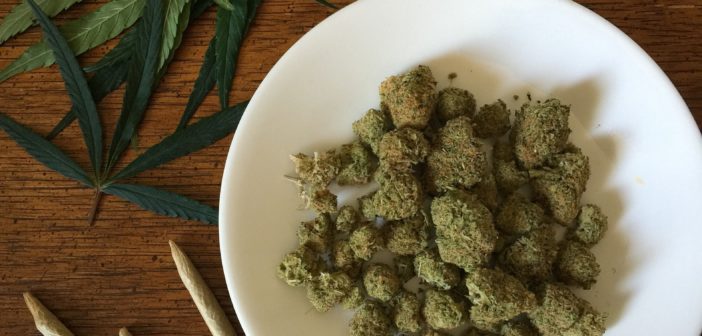Trump and Clinton weren’t the only thing voters were heading to the polls for on Nov. 8. Nine states were also voting for either the medical or recreational use of marijuana, which Arizona voted down, in what was labeled by The Washington Post as the “biggest electoral victory for marijuana reform since 2012 when Colorado and Washington first approved the drug’s recreational use.”
Florida, North Dakota and Arkansas added onto the 25 states and D.C. that already legally authorize marijuana use for several medical conditions. Legislation in Montana was also loosened in this election.
Jennifer Wider, M.D., told SELF that “medical marijuana works because your body naturally produces cannabinoids, marijuana-like chemicals that can positively impact pain, inflammation, and other bodily processes.”
It’s specifically used to combat symptoms like nausea, nerve pain, muscle spasms and stiffness and even decrease seizures in patients with epilepsy. But, as Dr. Wider points out, every drug has its side effects: “Medical marijuana has been linked to memory loss, slowed coordination, negative respiratory effects, and increased heart rate, among other side effects…”
In terms of recreational use, California, Massachusetts, Nevada and Maine added onto Alaska, Colorado, Oregon, Washington and Washington, D.C. as areas where you can legally grow, sell and smoke weed every day. Just don’t try and send it across state lines — marijuana transport and use is still illegal on the federal level, so crossing state lines with even a single pot brownie could get you arrested.
California’s law is also offering sentence reductions and removal of convictions from the records of those previously charged with possession of the most widely used illicit substance in the U.S., according to USA Today. They’re also using the revenue from the tax on marijuana to fund regulations, youth education on drugs, law enforcement training, and cleaning of lands that were damaged by illegal cultivation.
Most of this legislation is coming now that the CDC said that the drug no longer has a high level of abuse or dependency, with only one third reporting addiction, even though its use is more widespread than 14 years ago.
A Gallup poll from August showed that one in eight adults reported marijuana usage, up 6 percent from 2013. While there was a high percentage of people in the 18-25 age bracket reporting use in 2014, you’ll have to be at least 21 years old and pay a 10-15 percent sales tax to legally use the drug in the states that allow recreational enjoyment.
Some worry, though, that widespread legalization will “pose public safety risks and lead to an increase in adolescent drug abuse,” said Sam Levin with The Guardian. Others think that legalization can help end “the war on drugs that has fueled mass incarceration and disproportionately affected people of color.”
Ethan Nadelmannm, executive director of the Drug Policy Alliance told Christopher Ingraham of The Washington Post that “the end of marijuana prohibition nationally, and even internationally, is fast approaching” due to California’s endorsement at the polls and predicted $7.6 billion market by 2020, and the market only continues to grow.
According to the Marijuana Policy Group as reported by CNN, the industry “created 18,000 full-time jobs last year and generated $2.39 billion in economic activity in Colorado.”
But will national legalization happen in the next four years? “An incoming administration more skeptical of drug reform could easily reverse that approach,” writes Ingraham. So you might be saving that celebration J for awhile.

